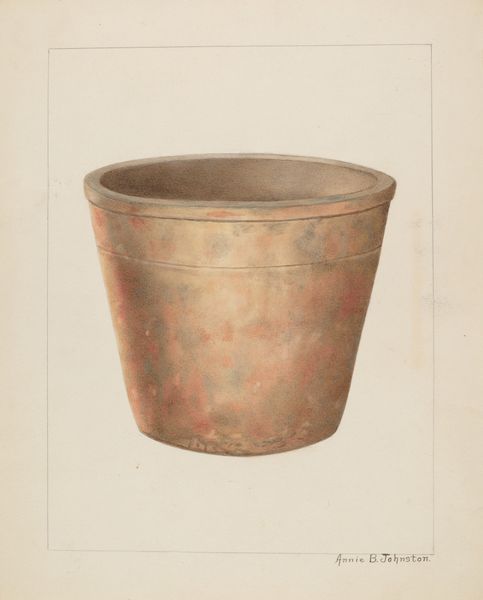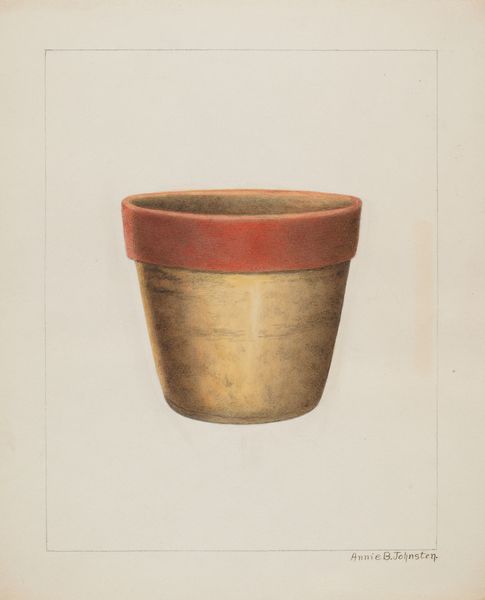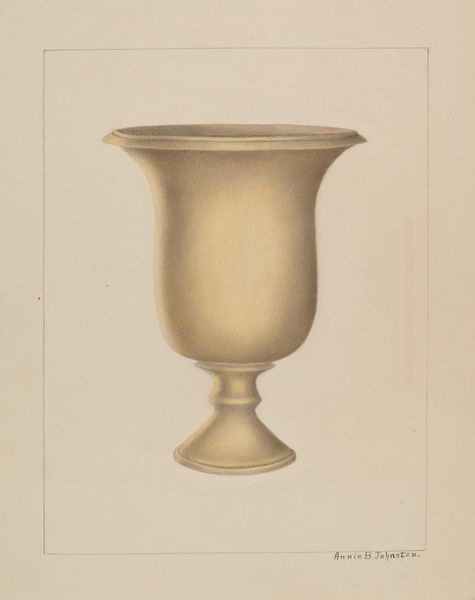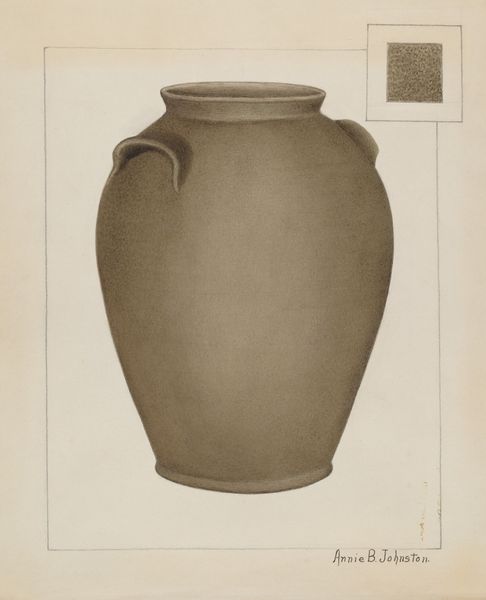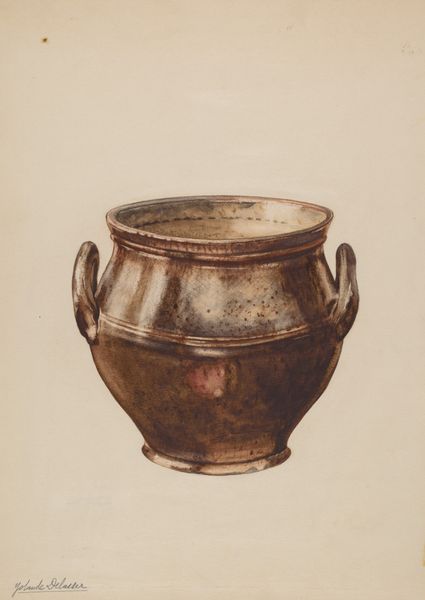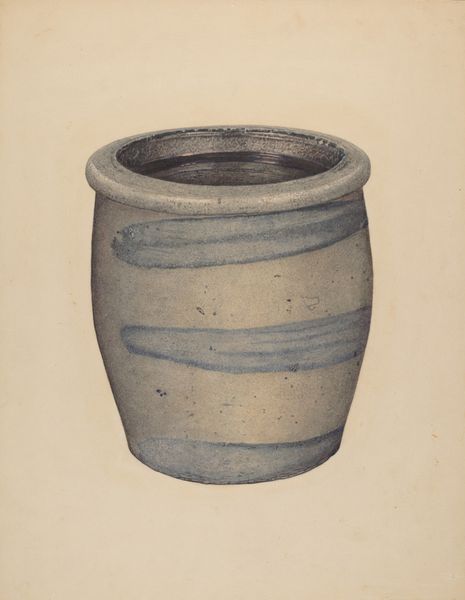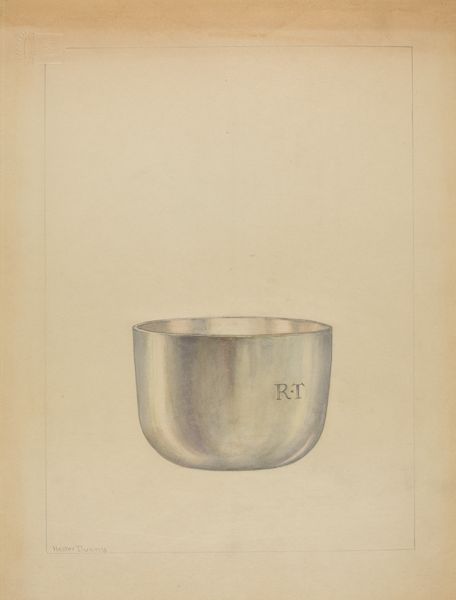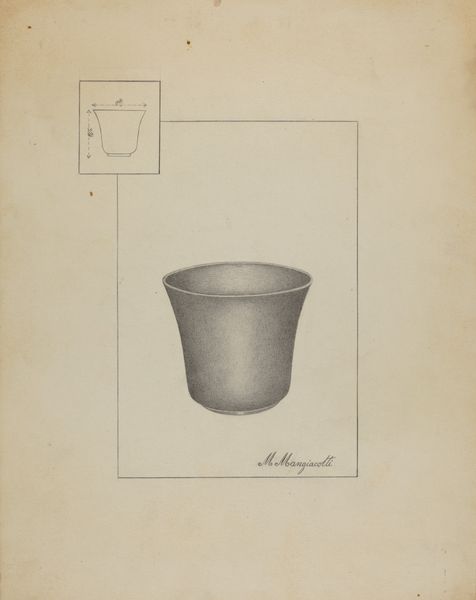
drawing, ceramic, pencil
#
drawing
#
ceramic
#
charcoal drawing
#
pencil drawing
#
stoneware
#
pencil
#
ceramic
#
watercolour illustration
#
watercolor
Dimensions: overall: 27.8 x 22.7 cm (10 15/16 x 8 15/16 in.) Original IAD Object: 8" High 7 1/2" Dia
Copyright: National Gallery of Art: CC0 1.0
Curator: Here we have Annie B. Johnston’s “Pottery Flower Pot,” created around 1937. What’s grabbing your attention right away? Editor: There's a delicate vulnerability to it, even though it depicts something so earthy. That crack running down the side makes it feel… exposed, almost human. It's rendered with such careful observation. What exactly did she use? Curator: Well, based on our research it seems like the piece features both drawing and ceramic materials and techniques. It includes the use of pencil, charcoal and possibly some watercolors in order to achieve such delicacy. The very subject of the piece makes me think about the domestic life implied in the everyday object as a vessel to contain organic and living material. Editor: I appreciate you pointing that out. The social context of handmade pottery around that time, too, is important. It’s easy to think of this piece as folksy or purely decorative, but its creation also reflects economic realities, like access to industrially produced goods. It represents labor and craft in a very material way. Do we know where this pot might have been sourced? Or more specifically, why this particular one? Curator: We don’t, unfortunately. I find it endlessly fascinating how an object so common—a flowerpot—becomes intensely personal through observation. Johnston hasn’t just recorded its form; she’s captured its history. You can almost feel the gardener’s hands, the cycles of watering, the very texture of clay. Editor: Absolutely. It's like she has transformed something utterly mundane into something filled with narratives around daily practice. We so often overlook the artistry inherent in creating even simple things like these, and her documentation, her labor, demands our recognition. There's so much embodied knowledge within craft, isn't it? Curator: I think that is one of the beauties about artwork and observing art history through the perspective of the object itself. I keep finding something very powerful in such quiet focus. The gentle tonal variations become, in a strange way, profound. Editor: And thinking about this pot as a product, even a drawing of one, shifts our focus away from notions of genius and back to the labor and value inherent in production. It makes us question what we consider art, doesn’t it? Curator: It really does. In a subtle way, I feel invited into that humble moment of reflection that she captured. It inspires me. Editor: Agreed, it reframes our perspective from the decorative to the significant; and on craft and labor itself. I am left contemplating how labor intertwines with our lives, one object at a time.
Comments
No comments
Be the first to comment and join the conversation on the ultimate creative platform.
